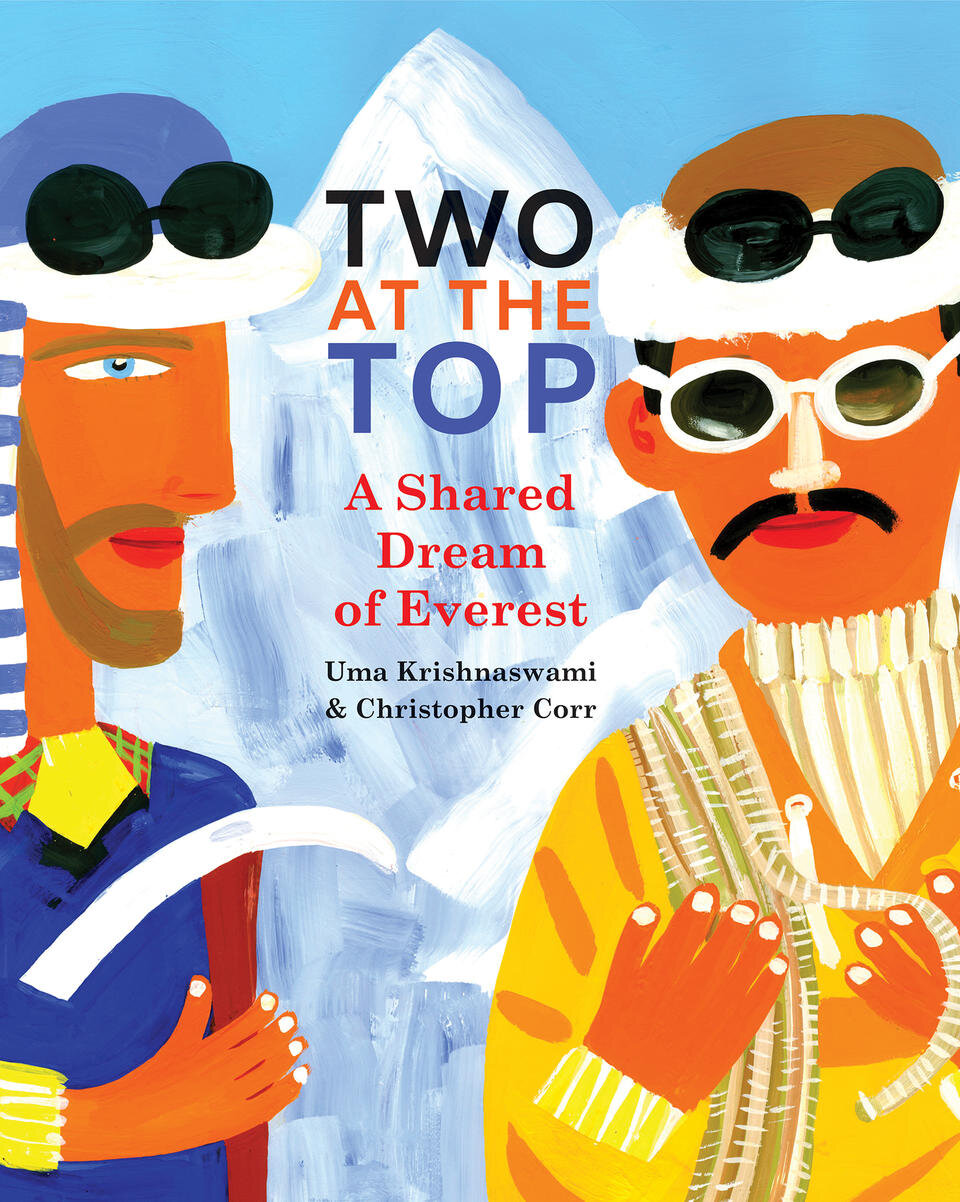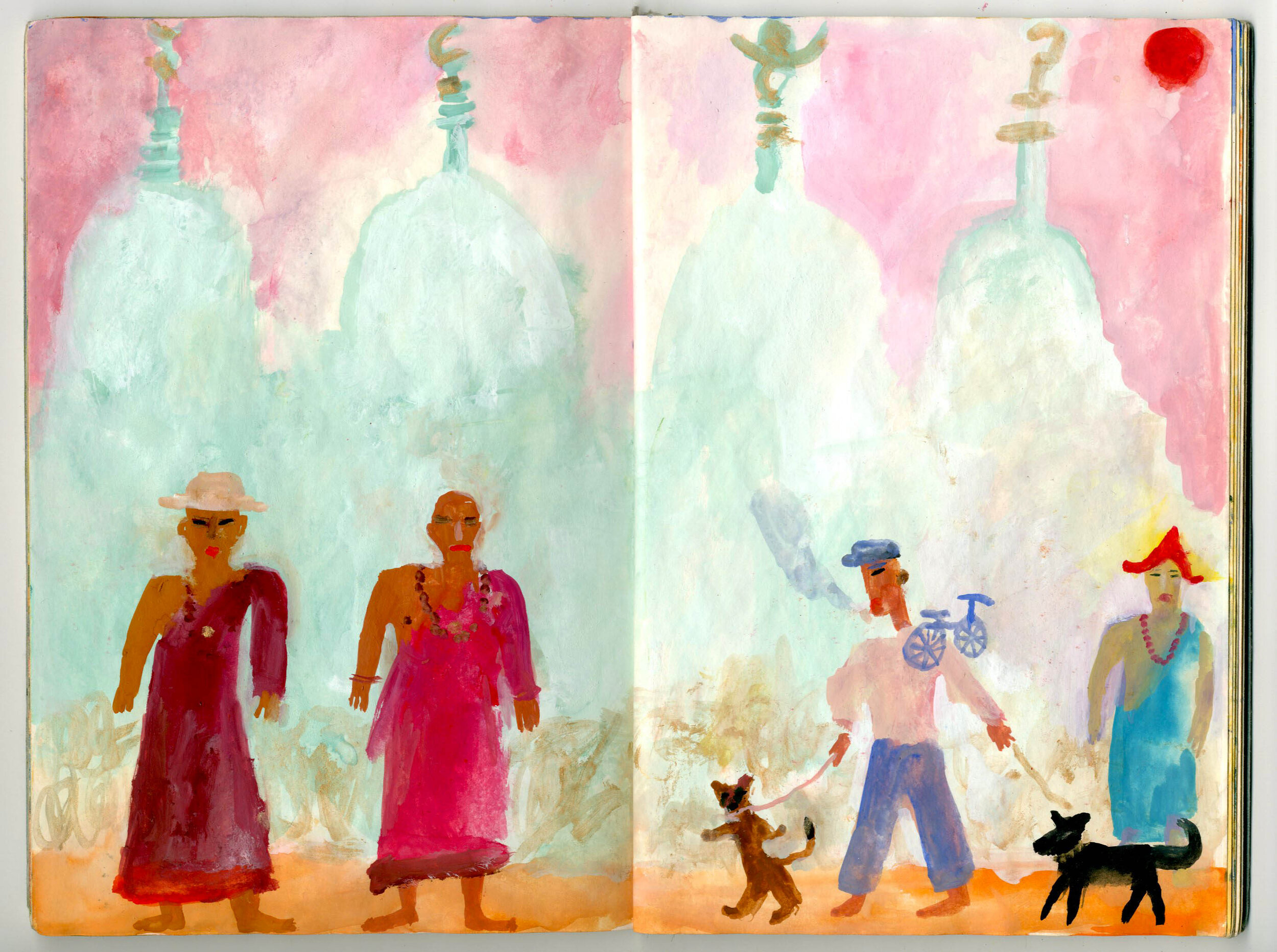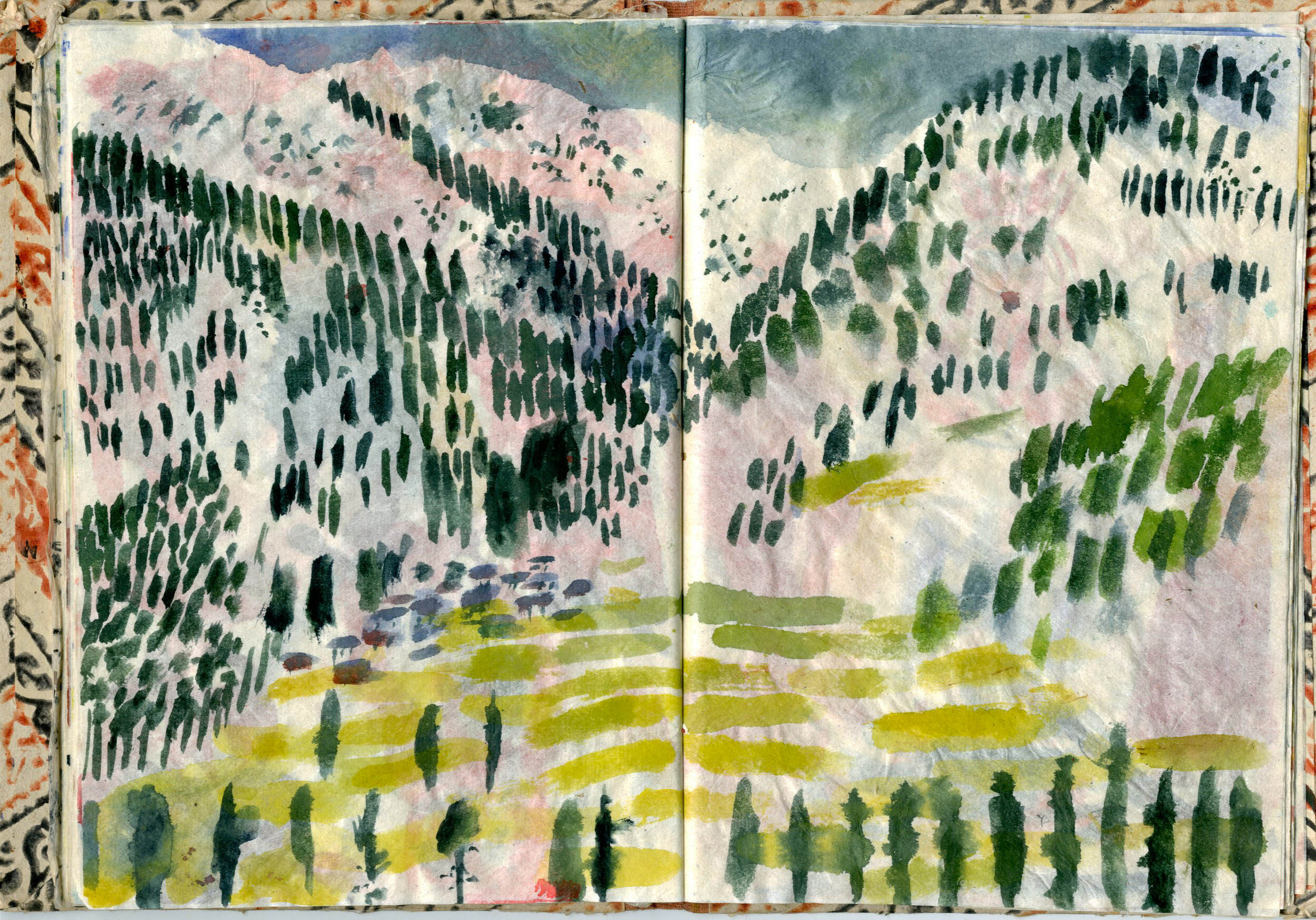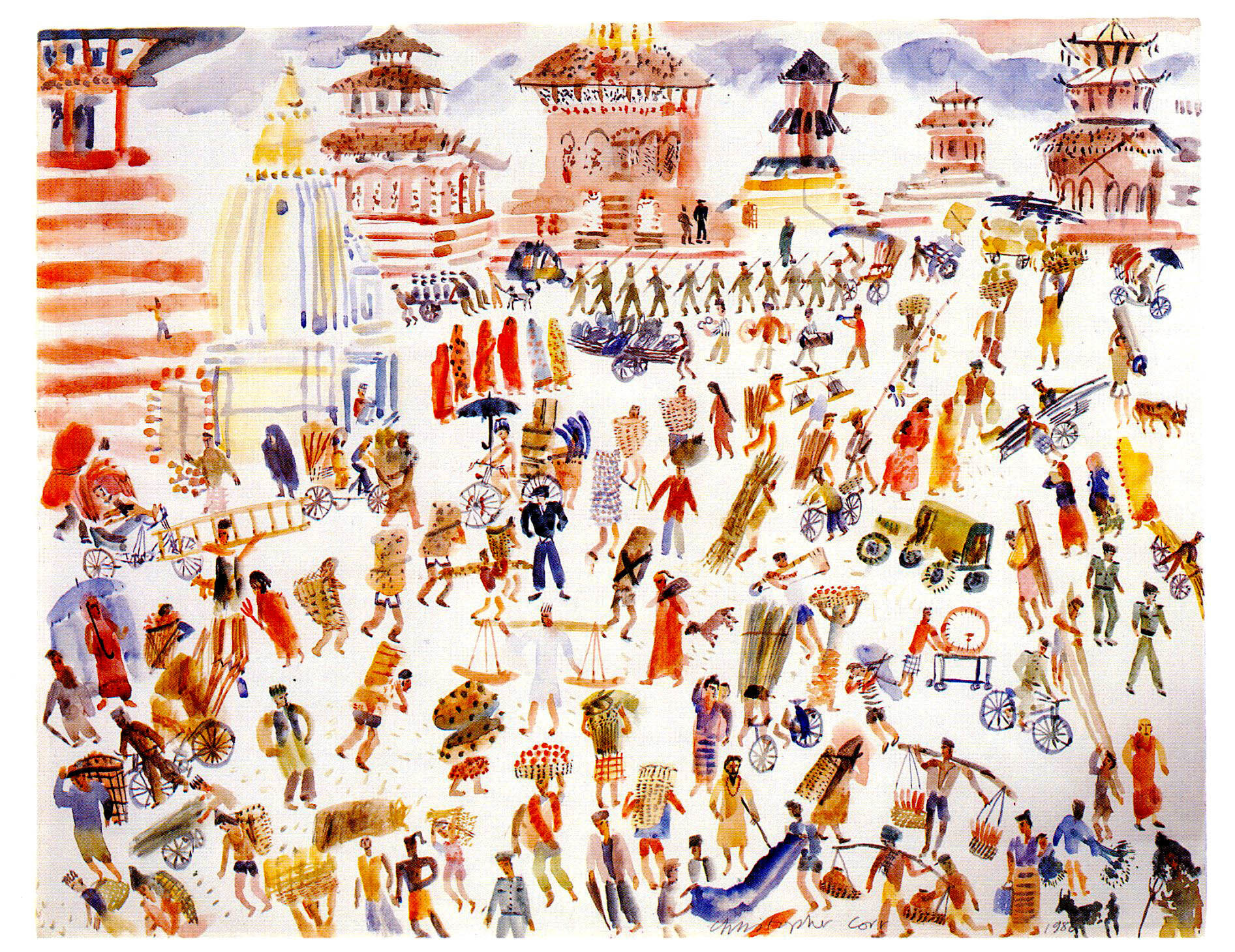Picture This: Christopher Corr on Two at the Top
With my picture book, Two at the Top: A Shared Dream of Everest just out from Groundwood Books, I’ve been thinking about the synergy of words and images in my very favorite art form, the picture book. Christopher Corr’s art in Two at the Top is alive with the colors of grass and flowers, prayer flags and the clothes of people. Somehow, Chris creates movement and energy, so the figures seem to leap out of great flat stretches of green meadow or blue glaciers.
As a picture book writer, I always feel as if I’m creating half a book, because of course my words can’t stand on their own—they demand not just visual images, but a visual story.
I asked Chris if he’d talk to me about his illustration process—in general, and particularly with this book. Here’s what he said.
[Chris] As an illustrator, when I get the text for a book, I think about the story, the characters and the location. I research until I get to know and understand the story.
I think about the mood and the colours of the story, the atmosphere, how it looks.
When I feel that I know the story I start to draw and ‘picturise’ it.
I really like the story of Two At The Top and Norgay and Hillary are so inspiring. I’m so impressed by their own personal stories, and their courage and strength and humility. Their story is all good! And you know they are great people.
[Uma] Indeed. It’s why I was drawn to this material, but let’s talk about setting. I can feel the Himalayan setting in your images and like me, I know you’ve spent time in the Himalayas, in India and Nepal. How did your travels influence or inspire your art for this book?
Buddhist monks and Stupas in Qinghai Province, China. © Christopher Corr. Image courtesy of the artist
[Chris] I started drawing and travelling when I was a student.
There is something special and exhilarating about drawing on location. It intensifies your senses, and it makes you look and see so much more. Taking photographs is not the same.
I travelled in China, hoping to visit Tibet but I only got as far as Qinghai Province in Outer Tibet and an important Buddhist region.
I have been to Nepal to draw and hike and it’s where I got my first glimpse of the Himalayas.
Nepali village. © Christopher Corr. Image courtesy of the artist
I’ve been drawing and painting in India for several years now. For an artist it is a startling shock to the senses. The noise, the colour, the smells! It stirs your soul, it wakes you up, and it tests your skills.
I discovered colour in India, vivid and raw pure colour.
I went up into the Himalayan foothills to see and draw Buddhist communities, refugees from Tibet. It was so calm and peaceful there and a joy to draw and paint.
I loved the architecture, the moody temples, monasteries [gompas] and stupas and all the colours, red and orange robes and rainbow prayer flags fluttering against intense blue skies.
Chris in Ladakh. Photo courtesy of Christopher Corr
One summer I decided to go to Ladakh and see what life was like in the ancient Himalayan kingdom at the very north of India, high up in the mountains. The rooftop of the world!
I spent two months walking in the valleys following icy rivers, in the shadow of the mountains in the clear sharp Himalayan light.
[Uma] I love that! For me as well, a whole range of life experiences led to this book so this feels like a view through a creative looking-glass! Thank you, Chris!
More to come from Christopher Corr on landscape and on color as an unspoken language.
Nepali scenes from Chris’s travels. © Christopher Corr. Images courtesy of the artist







